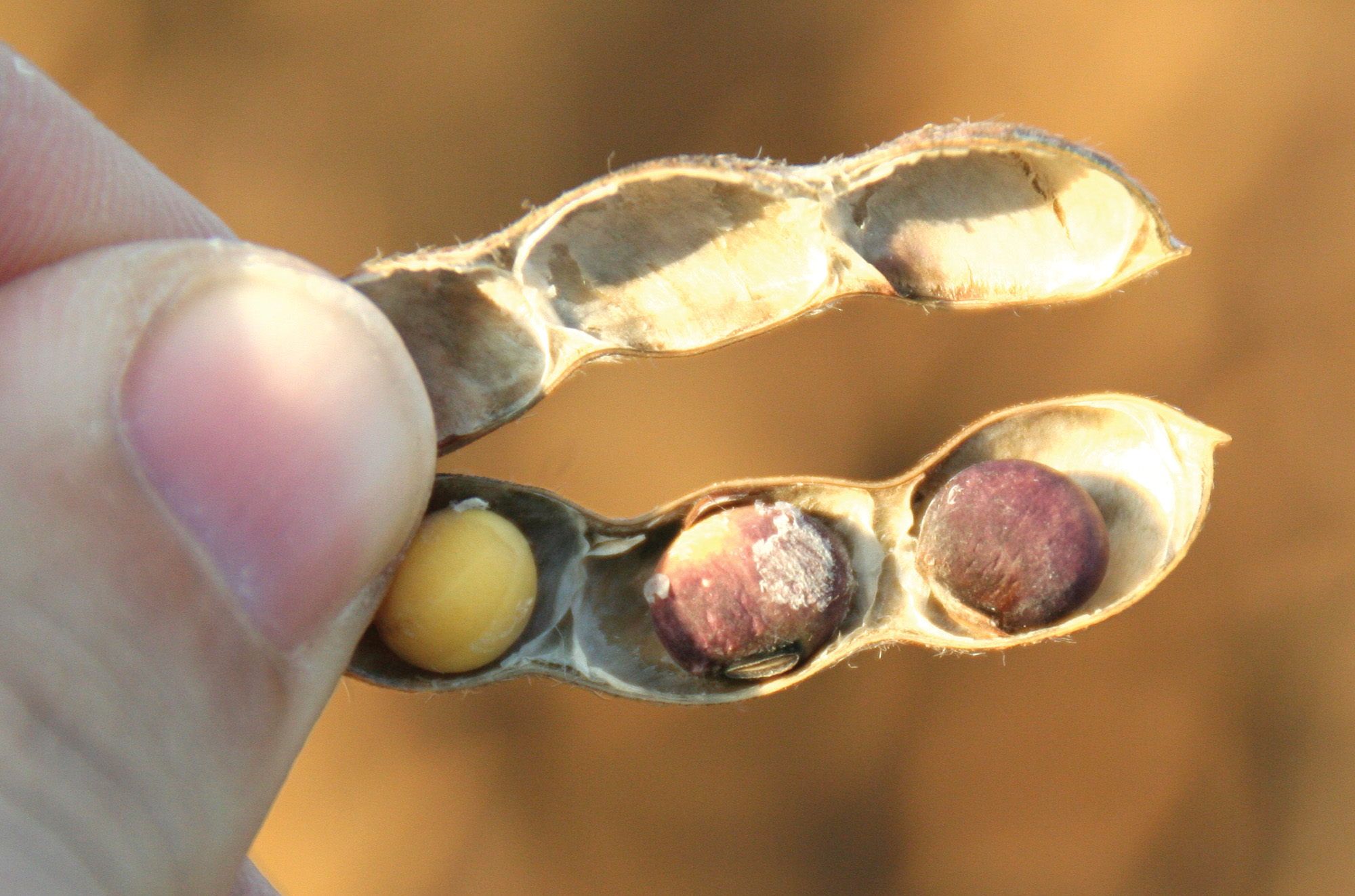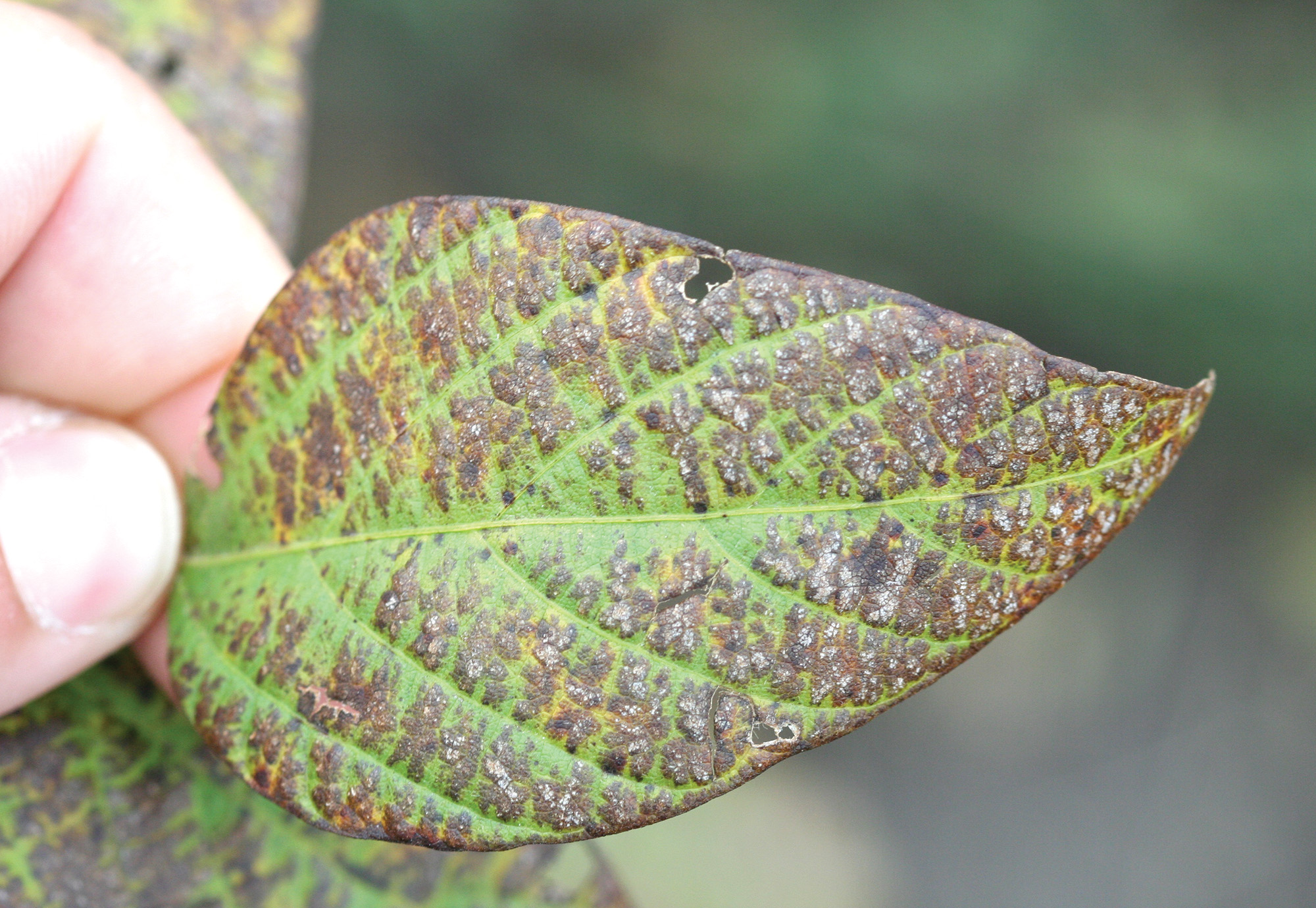

There were a number of soybean diseases that unfortunately had a big year in 2024.
HERE’S A QUICK RECAP OF WHAT HAPPENED, ALONG WITH SOME CONSIDERATIONS FOR NEXT YEAR’S SEED SELECTION AND SOYBEAN FIELD MANAGEMENT.
SUDDEN DEATH SYNDROME
SUDDEN DEATH SYNDROME (SDS) showed up across a broad area in 2024. Planting into wet soils or soils that became wet shortly after planting was likely a big contributing factor.
Here are our suggestions on how to reduce SDS next season.
-
VARIETAL SELECTION
Breeders are getting very good disease tolerance notes from 2024 across the new varieties, and this will greatly help them screen out susceptible varieties
-
VARIETAL TOLERANCE
Varieties tolerant to SDS are still showing some effects of the disease in compaction areas. Reducing compaction really helps lessen SDS.
- SEED TREATMENTSaltro and ILeVO worked very well in preventing SDS. Untreated fields often had blue fungal colonies visible on the roots, like in the photo below.
-
DEVELOP MASSIVE ROOTS
Root mass lost due to SDS meant the remaining roots were left in dry dirt due to the late season drought, adding more stress and causing premature death.
-
IMPROVE DRAINAGE
Fields where water sat longer were more likely to have SDS. If you currently have tile but still had water sitting too long, consider adding a lift station or narrow the spacings of your pattern tile by adding more lateral lines. Also, you want to make sure your base saturation calcium levels are over 65%, you are building soil organic matter as that increases soil porosity, and you do some deep tillage where necessary, preferably with a straight shank and narrow point.
PHYTOPHTHORA ROOT PIT
Late-season phytophthora root rot (PRR) is becoming increasingly more common.
-
“NOT IN MY AREA!”
If you think that, think again. Phytophthora doesn’t just hit fields in wetter regions, it also is a big problem where it’s dry. Examples of dry areas with PRR issues include western Minnesota and the Dakotas.
-
WHAT TO LOOK FOR?
Watch for yellowing leaves and a chocolate color coming up the stem starting at the base of the plant.
- WHICH RESISTANCE GENE IS BEST?Rps3A is becoming the dominant gene, but stacks combining Rps3A with 1C or 1K are working very well.
-
VARIETAL FIELD TOLERANCE RATINGS ARE IMPORTANT TO WATCH, AS WELL.
CERCOSPORA IN SOYBEANS
Don’t wait to see if purple seed stain is in the grain tank at harvest!
-
PREVENTION IS KEY
An application of a foliar fungicide once or especially twice during the reproductive stages of soybean growth will be effective at holding cercospora out.
-
IDENTIFICATION
Late May and June plantings showed more cercospora in 2024 than early planted beans. This may be due to the disease hitting late this past season.
- FLOWERS AND TOLERANCEWhite-flowered beans have better cercospora tolerance than purple-flowered beans, although there are certainly some exceptions. I’m not sure this should sway your seed selection for the coming season, but it’s something we’ve noticed for many years. Unfortunately, there are many more purple-flower varieties available.
SUMMARY
Reduce disease incidence by:
- Using a seed treatment on soybeans every time. Shoot for three to four different modes of action (MOA) for best results on a wide array of diseases. Add either Saltro or ILeVO for help with SDS.
- Controlling the water table by installing and maintaining a sub-surface drainage system.
- Choosing varieties of soybeans carefully and spreading your risk by planting numerous, unrelated beans.
- Applying foliar fungicides, especially during the reproductive stages of growth. Expect them to provide 2-3 weeks of protection. Then, layer with another application after that.
- Minimizing soil compaction.


